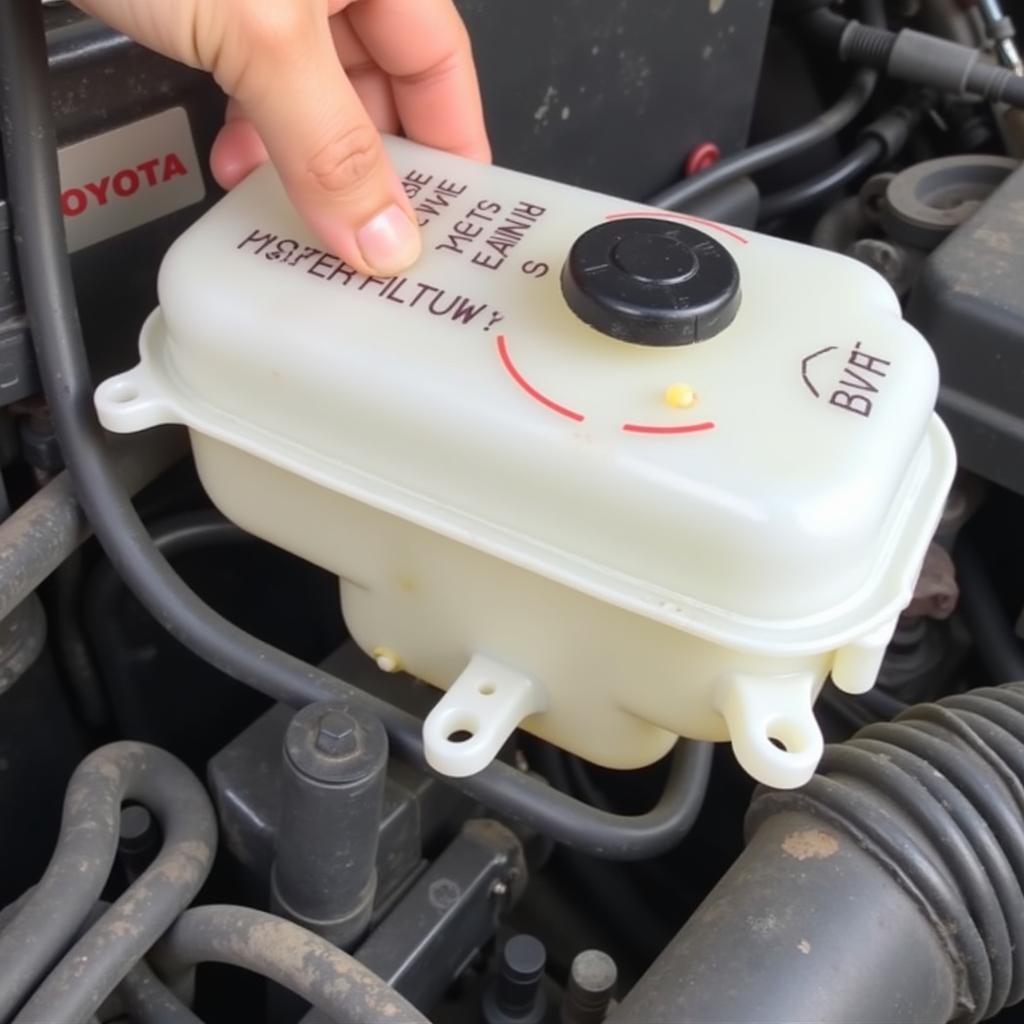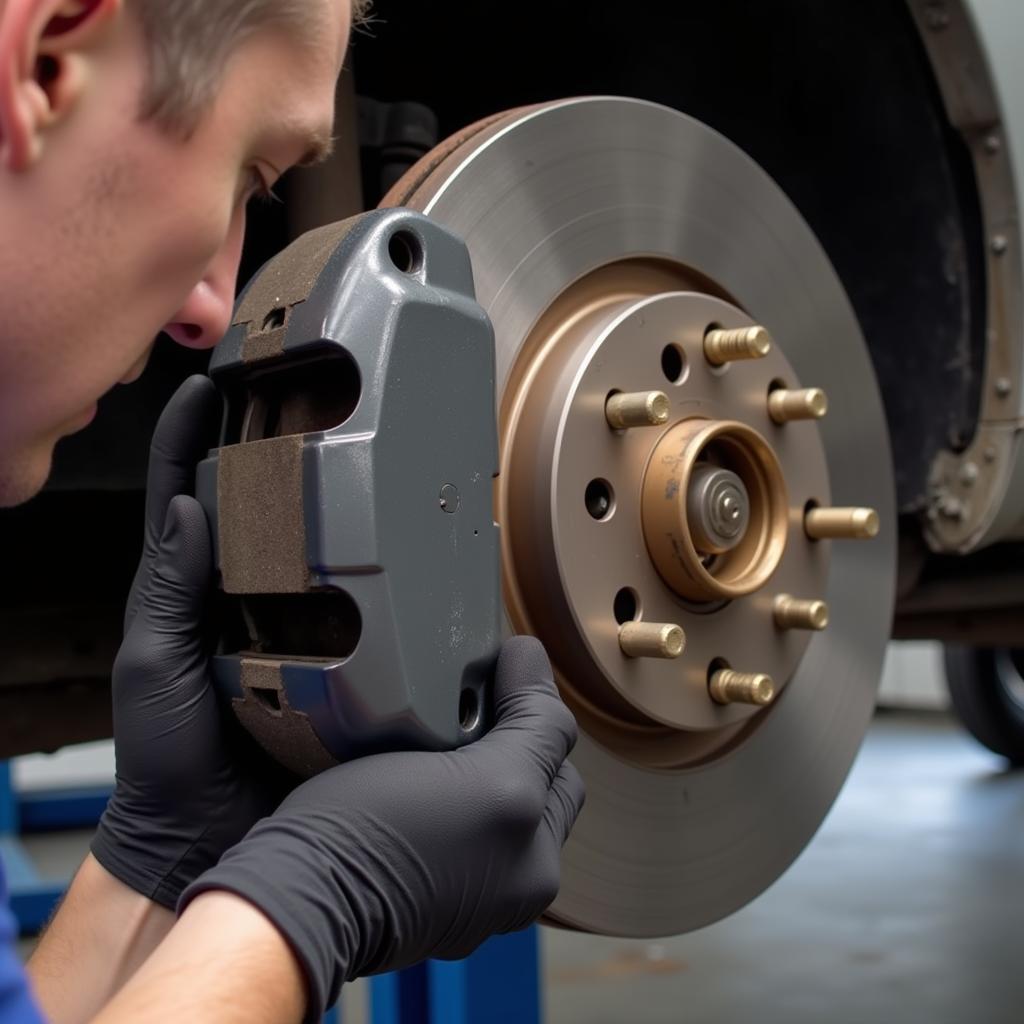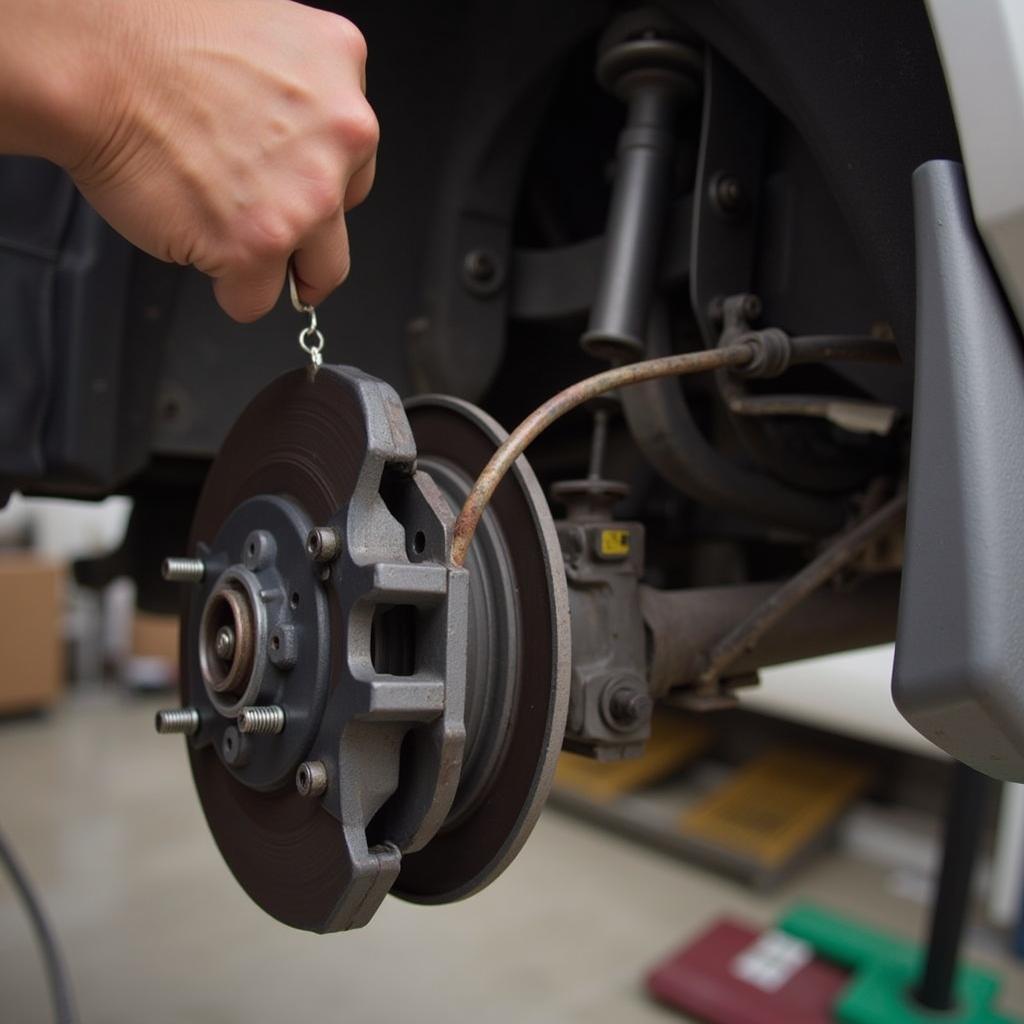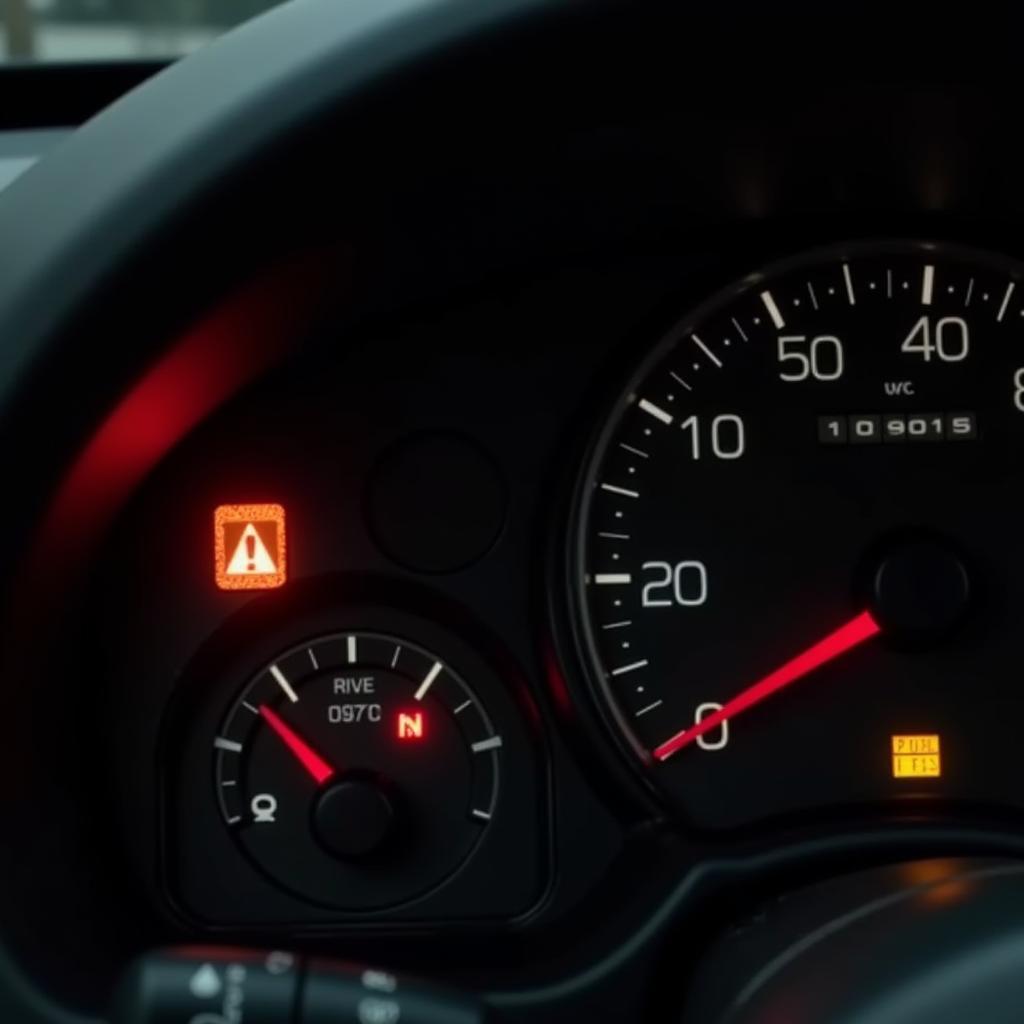The 2003 Toyota 4Runner is a reliable SUV, but like any vehicle, it can experience issues. One common problem is the illumination of the brake warning light. This light can signal a range of issues, from low brake fluid to more serious problems with the braking system. Understanding what triggers this light and how to address the underlying issue is crucial for your safety and the longevity of your 4Runner.
Understanding Your 4Runner’s Brake Warning Light
The brake warning light in your 2003 Toyota 4Runner serves as a critical safety indicator. It can illuminate for several reasons, often related to the hydraulic brake system, the parking brake, or the Anti-lock Braking System (ABS). Identifying the specific cause requires careful diagnosis. Ignoring the light can lead to more severe and potentially dangerous problems.
Common Causes of a Lit Brake Warning Light
Several factors can trigger the brake warning light. One of the most common is low brake fluid. This could indicate a leak in the brake lines, worn brake pads, or a faulty master cylinder. Another potential culprit is the parking brake. If it’s engaged, even slightly, the light can stay on. Additionally, issues with the ABS, such as a faulty sensor or low ABS fluid, can illuminate the warning light.
 2003 Toyota 4Runner Low Brake Fluid Level Check
2003 Toyota 4Runner Low Brake Fluid Level Check
Diagnosing the Problem
Start by checking the simplest things first. Make sure the parking brake is fully released. Then, check the brake fluid level in the master cylinder reservoir under the hood. If the fluid is low, top it off with the correct type of brake fluid. However, simply adding fluid doesn’t fix the underlying problem. A persistent low fluid level signifies a leak that needs immediate attention from a qualified mechanic.
If the fluid level is adequate and the parking brake is disengaged, the problem likely resides within the braking system itself. This could include worn brake pads, a malfunctioning master cylinder, or issues with the ABS. Diagnosing these issues may require specialized tools and expertise.
 Inspecting Brake Pads on a 2003 Toyota 4Runner
Inspecting Brake Pads on a 2003 Toyota 4Runner
Troubleshooting the 2003 Toyota 4Runner Brake Warning Light
Before rushing to a mechanic, you can perform some basic troubleshooting steps.
-
Check the Parking Brake: Ensure it’s fully disengaged. Sometimes a slight engagement can trigger the light.
-
Inspect Brake Fluid Level: Locate the master cylinder reservoir under the hood and check the fluid level. Top it off if necessary using the correct DOT 3 or DOT 4 brake fluid specified in your owner’s manual.
-
Visual Inspection of Brake Lines: Look for any signs of leaks or damage to the brake lines.
-
Listen for Unusual Noises: Pay attention to any grinding or squealing sounds while braking, which could indicate worn brake pads.
“Remember, safety is paramount when dealing with brakes. If you’re unsure about any step, it’s always best to consult a qualified mechanic.” – John Miller, ASE Certified Master Technician
 Checking Brake Lines for Leaks on a 2003 Toyota 4Runner
Checking Brake Lines for Leaks on a 2003 Toyota 4Runner
When to Seek Professional Help
While basic checks can be helpful, some issues require professional expertise. If the brake warning light persists after topping off the fluid, or if you notice any unusual brake behavior such as spongy pedal feel, decreased braking performance, or pulling to one side, it’s essential to take your 4Runner to a qualified mechanic immediately. Don’t delay, as ignoring these signs can lead to dangerous driving conditions.
“A seemingly minor brake issue can quickly escalate into a major problem. Addressing it promptly can save you money and ensure your safety on the road.” – Susan Davis, Automotive Engineer
Conclusion
The brake warning light in your 2003 Toyota 4Runner is a vital safety feature. Understanding its potential causes and taking appropriate action can prevent serious problems. While simple checks like fluid levels and parking brake engagement can be done at home, persistent issues necessitate professional attention. Addressing the 2003 toyota 4runner brake warning light promptly ensures your safety and keeps your 4Runner running smoothly.
FAQ
-
What does the brake warning light mean? It indicates a potential problem with your braking system, such as low fluid, a faulty parking brake, or ABS issues.
-
Can I drive with the brake warning light on? It’s not recommended. Driving with a lit brake warning light can be dangerous. Have the issue diagnosed and repaired as soon as possible.
-
How do I check my brake fluid level? Locate the master cylinder reservoir under the hood. The fluid level should be between the minimum and maximum lines marked on the reservoir.
-
What type of brake fluid does a 2003 Toyota 4Runner use? Consult your owner’s manual for the correct DOT specification, typically DOT 3 or DOT 4.
-
What should I do if the brake warning light stays on after adding fluid? This indicates a leak or another issue within the braking system. Take your vehicle to a qualified mechanic for inspection and repair.
-
Can worn brake pads trigger the brake warning light? Yes, worn brake pads can cause low brake fluid, which can illuminate the warning light.
-
What if my brake pedal feels spongy? This is a sign of air in the brake lines or a problem with the master cylinder. Consult a mechanic immediately.

